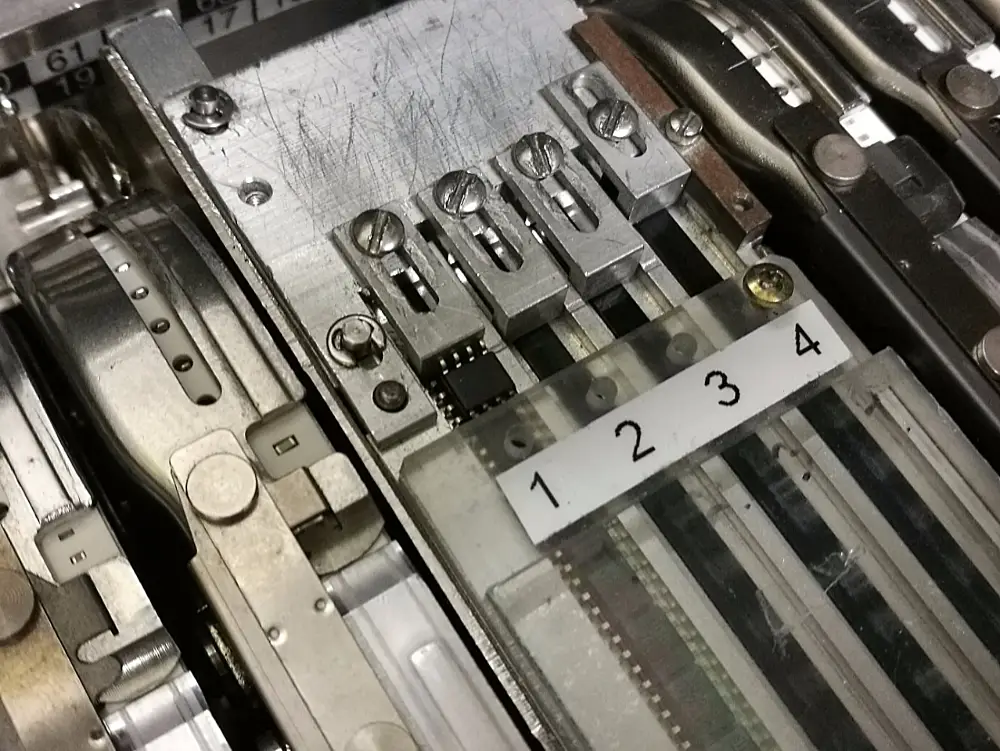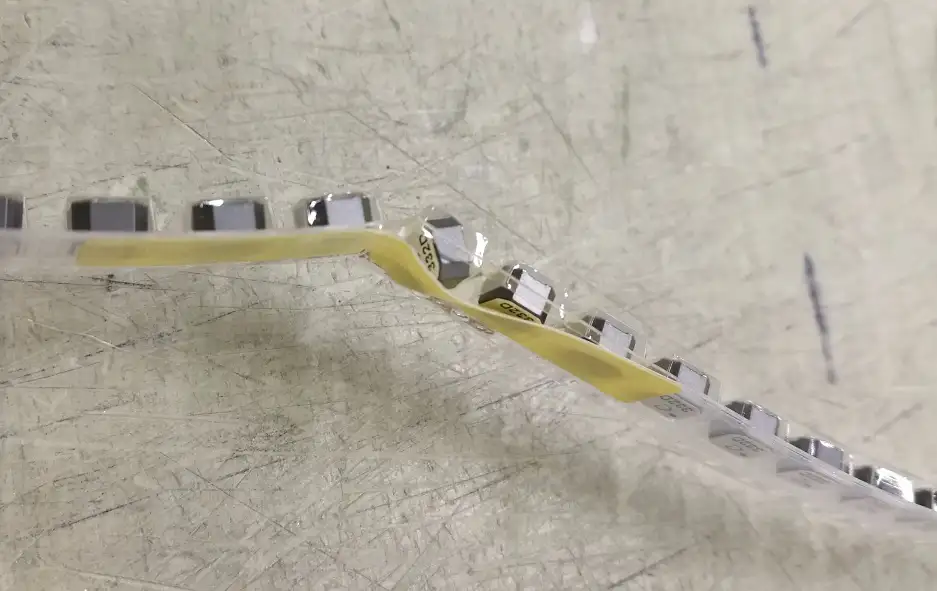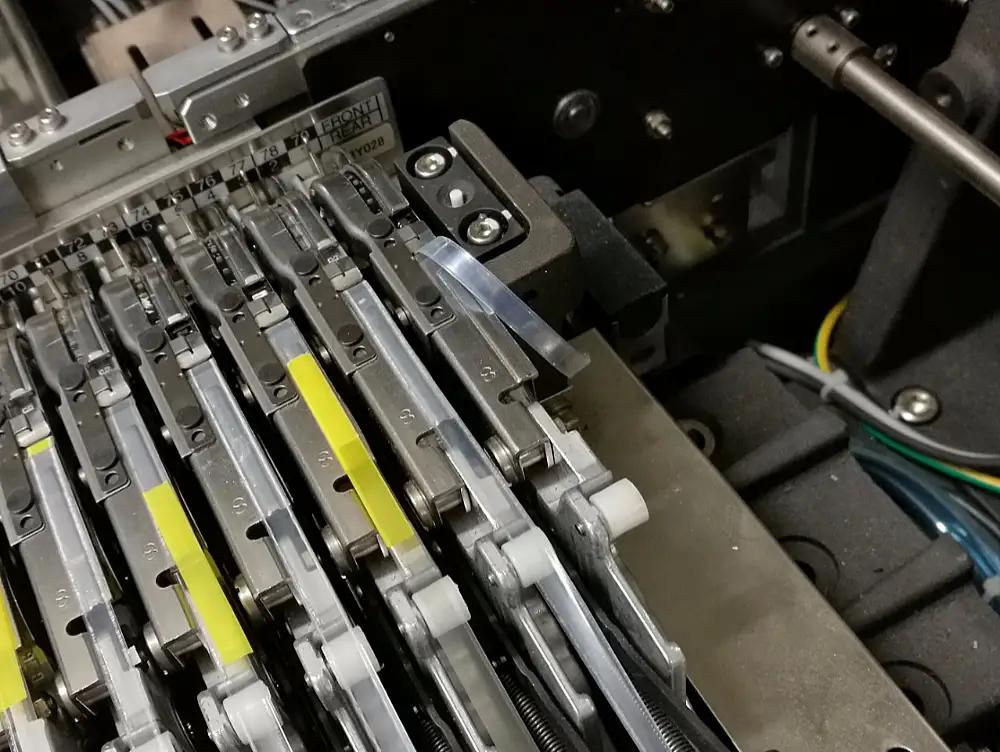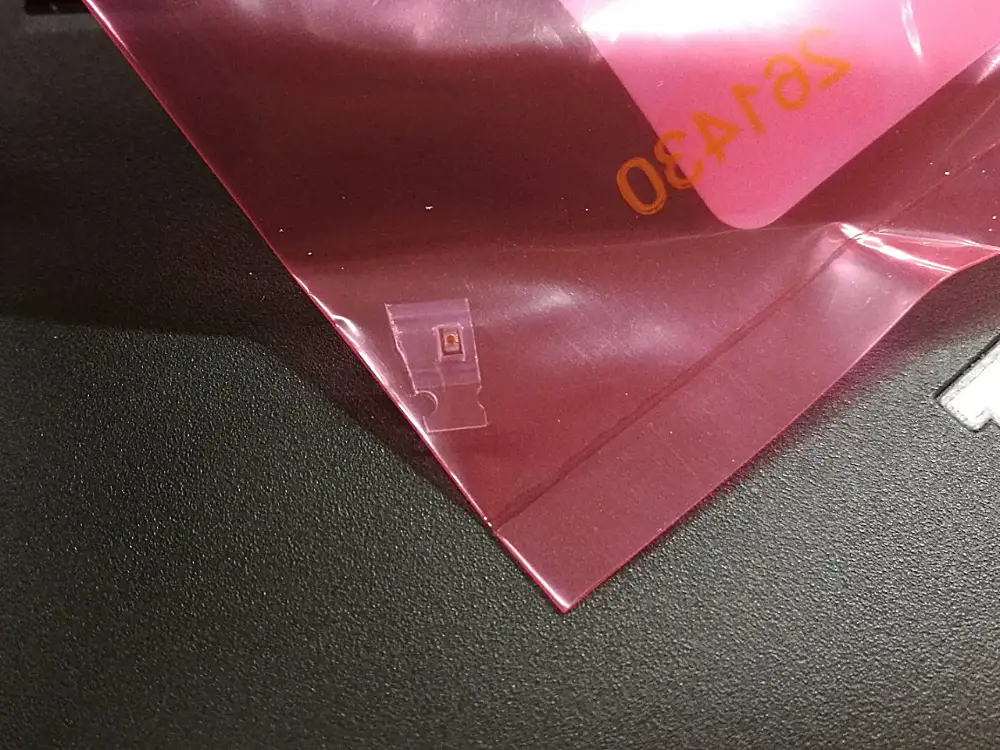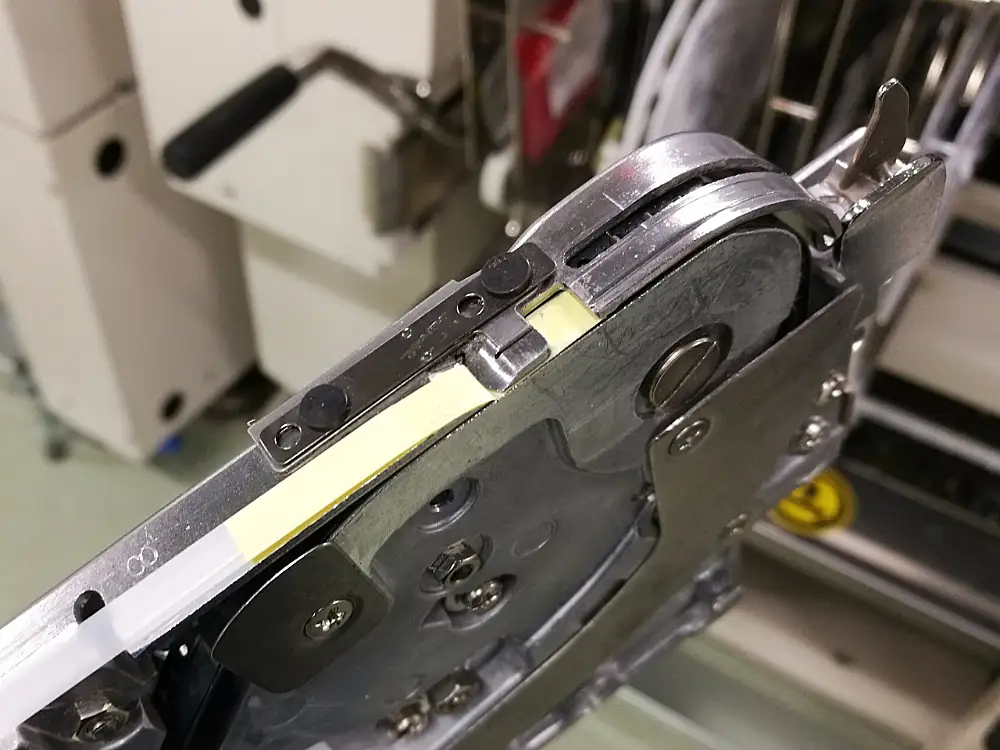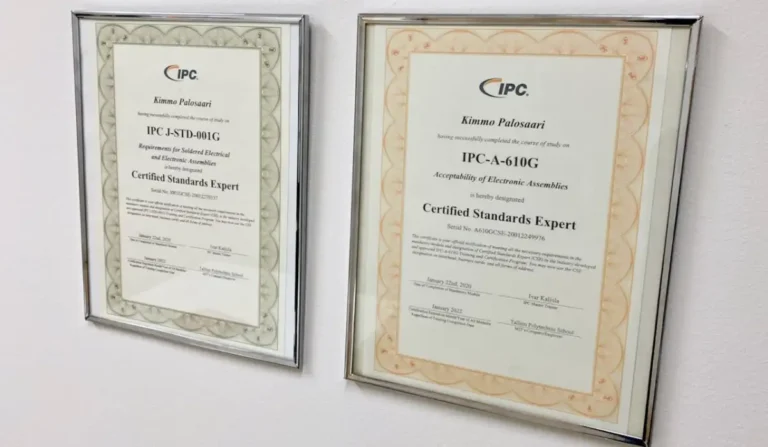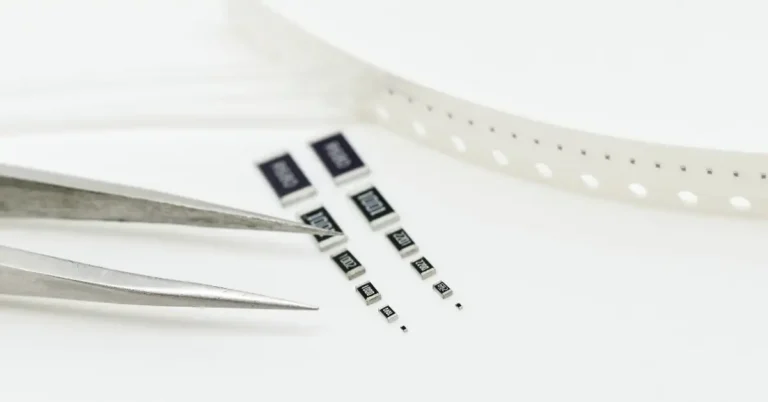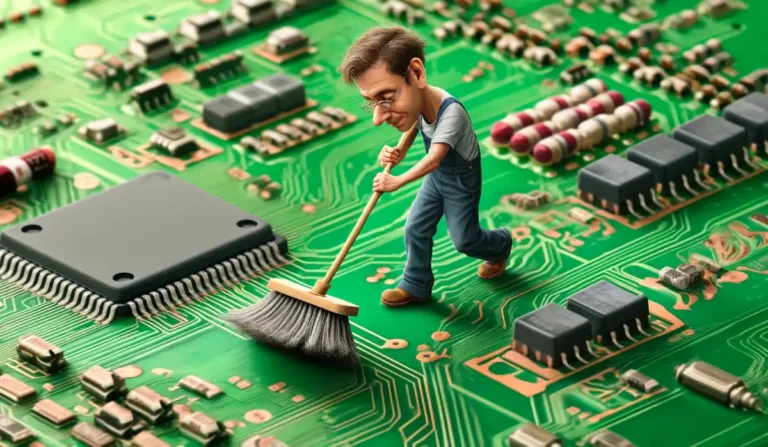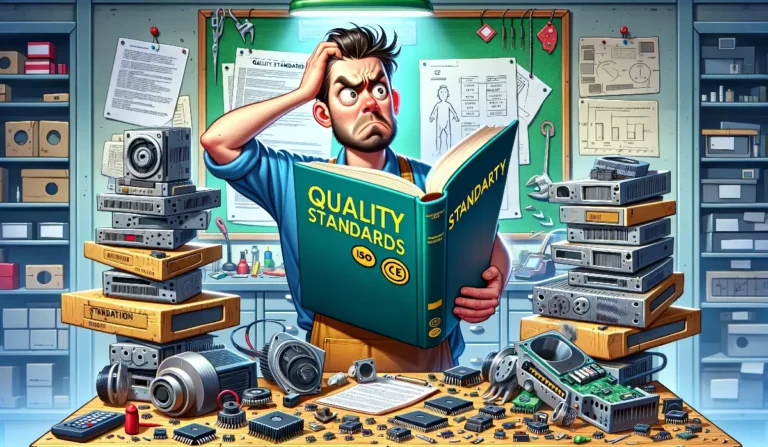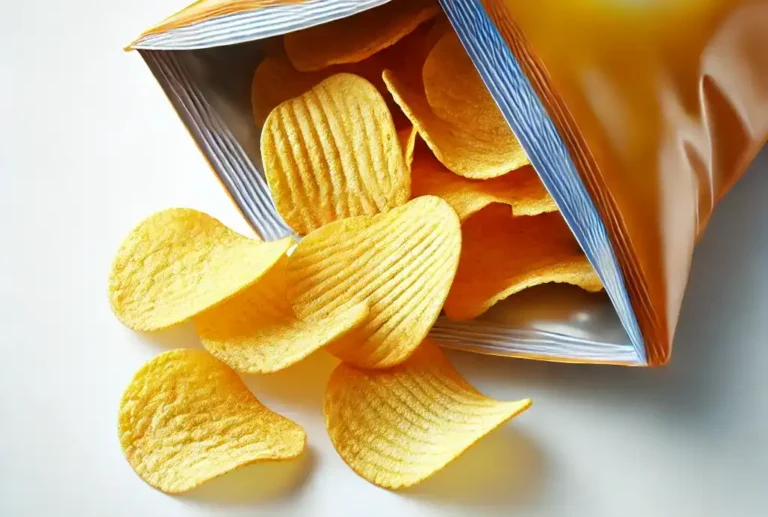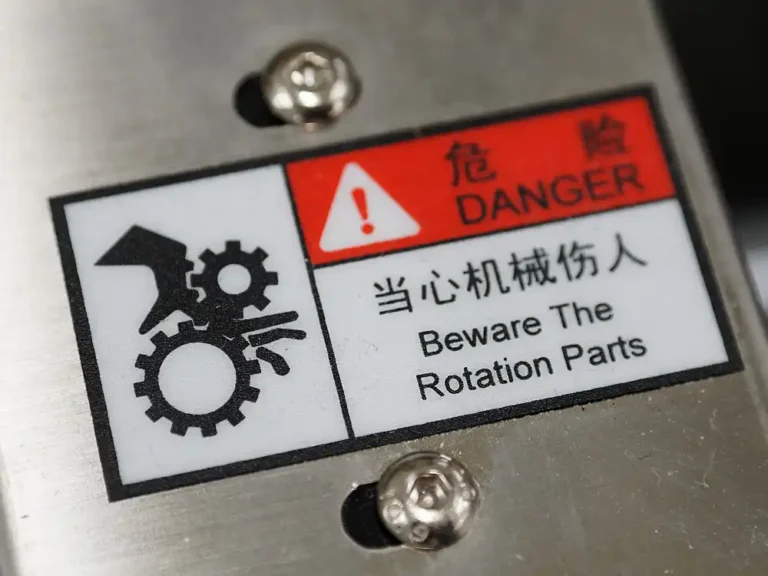Different Methods of Component Packaging
Tape and reel is the most common and recommended method for packaging components. This method has several advantages over others:
- High Capacity: The tape and reel can hold a large number of components, reducing the need for frequent reloading of the machine.
- Ease of Use: Tape and reel are easy and quick to load into the feeder, allowing for fast job changes.
- Cost-Effective: Tape feeders are more common and cheaper than other specialty feeders (e.g., tubes).
- Storage and Handling: Tape and reel are easy to store and handle.
Loose Components in Minigrip Bags
Despite being unavoidable at times, packaging components loosely in Minigrip bags has no production advantages:
- Manual Handling: Loose components must be manually placed on trays for machine loading.
- Mechanical Vulnerability: This method poses a risk to the components’ mechanical integrity, as IC pins can bend.
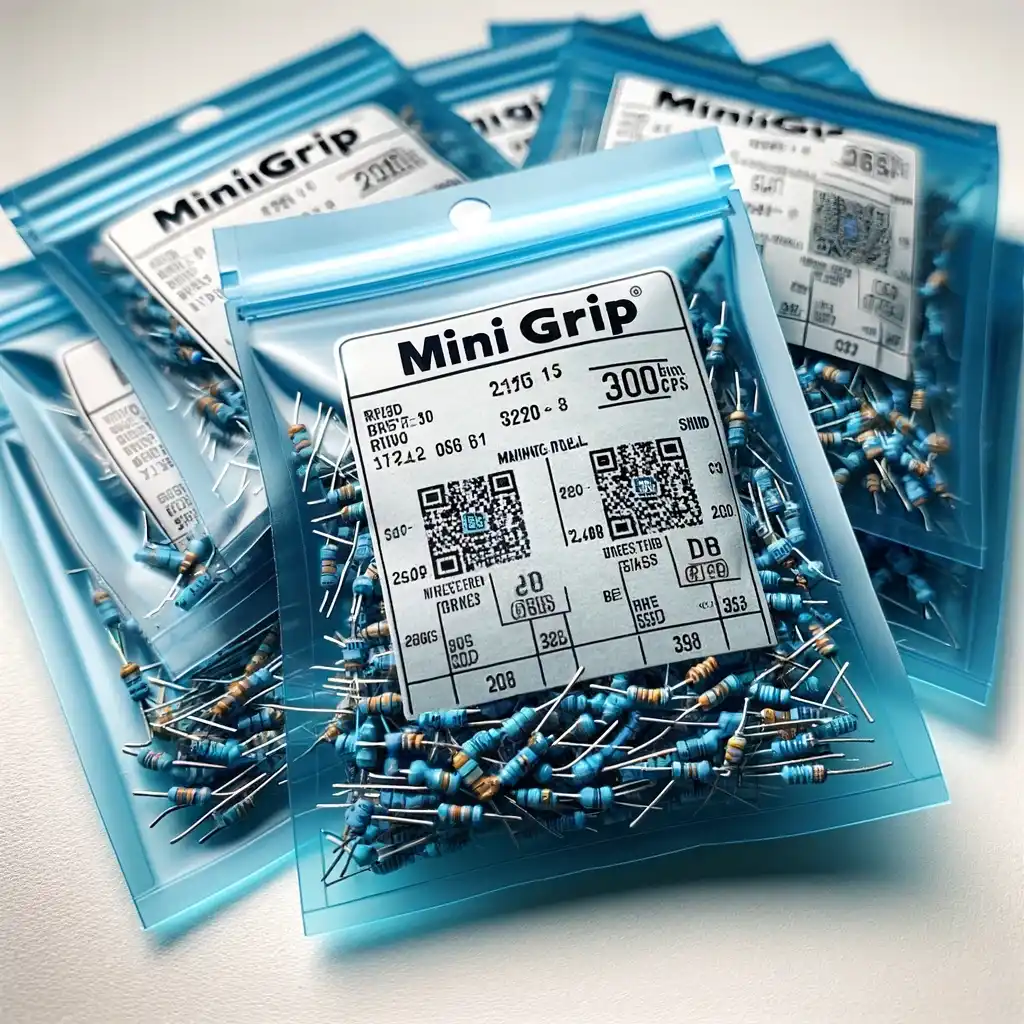
Tray, Pallet, or Waffle Pack
Pallets are a safe packaging method for large components, especially sensitive circuits. Components stored in pallets are often moisture-sensitive and can be safely vacuum-packed without damaging the components or the tape. Pallets are also relatively easy and safe to handle and store.
Cut Tape
When fewer components are needed than a full reel can provide, a cut tape is usually ordered. This method has its downsides and should be limited to expensive components. For instance, a full reel of 100k 0603 resistors costs only €3.50. Saving a few euros by ordering cut tape can lead to higher production costs due to:
- Splicing Requirements: Cut tapes need to be spliced for machine loading, which is time-consuming and extends setup time.
- Unreliable Joints: Spliced joints are often unreliable and can cause feeder jams.
- Inventory Challenges: Handling and storing cut tapes and individual components is difficult, leading to increased component loss and inventory management issues.
Tubes
Tubes are used for packing ICs and some other components like DPAK and D2PAK, although these are hard to load into machines. Tubes are less reliable than tape feeders due to several reasons:
- Unstable Operation: Components in tubes rely on their own weight and a conveyor belt, leading to misfeeds and alignment issues.
- Frequent Refills: Tubes need constant refilling during long production runs.
- Incorrect Placement: It’s easy to load components upside down or into the wrong slot in tube feeders.
- Costly Feeders: Each unique component size requires a specific feeder, which can be expensive (€1500-€4000).
For optimal production efficiency, it’s generally better to source components in tape rather than tubes whenever possible.
Conclusion
Choosing the right packaging method for electronic components significantly impacts production efficiency and cost. Tape and reel remain the preferred choice due to their capacity, ease of use, and reliability. While alternative methods like cut tape and tubes are available, they often introduce complications and increased costs. Therefore, understanding the strengths and weaknesses of each packaging method is crucial for streamlined electronic manufacturing.
